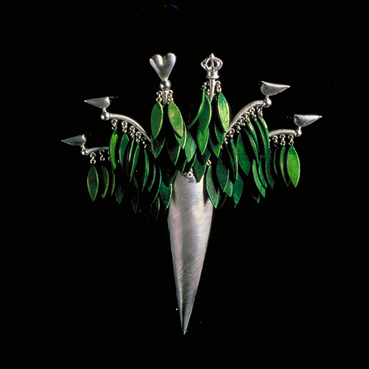Vernacular traditions in Norwegian jewelry design - Past, present, future
DOI:
https://doi.org/10.7577/formakademisk.1408Keywords:
jewelry design, Norway, vernacular traditions, globalization, identityAbstract
Living in an era of globalization, the capability of communicating identity has become of greater importance than ever. This has increased our estimation of the vernacular, which represents an expression of a national or local identity. In Norway the vernacular tradition in silver jewelry is particularly strong. It has played an important role not only locally, but also in the constantly changing relation with the outside world, in accordance with the societal situation. It should therefore constitute a reliable indicator of how our country relates to the present process of globalization. The aim of the paper is to throw light on the relation between Norway’s role on the global scene and the use of the vernacular tradition in the development of jewelry design in general. It consists of a historical exploration that leads up to a discussion the present and future situation. Today there is a cleft between consumer behavior and avant-garde practice. In accordance with the global situation and Norway’s geopolitical situation of existing in the outskirts of political and economic decisions, the situation is characterized by a variety of practices, and by a slow acceptance of the vernacular values in the world of avant-garde practitioners.

Downloads
Published
How to Cite
Issue
Section
License
Authors who publish with this journal agree to the following terms:
- Authors retain copyright and grant the journal right of first publication with the work simultaneously licensed under a Creative Commons Attribution 4.0 License that allows others to share the work with an acknowledgement of the work's authorship and initial publication in this journal.
- Authors are able to enter into separate, additional contractual arrangements for the non-exclusive distribution of the journal's published version of the work (e.g., post it to an institutional repository or publish it in a book), with an acknowledgement of its initial publication in this journal.
- Authors are permitted and encouraged to post their work online (e.g., in institutional repositories or on their website) prior to and during the submission process, as it can lead to productive exchanges, as well as earlier and greater citation of published work (See The Effect of Open Access).
- The author(s) must manage their economic reproduction rights to any third party.
- The journal makes no financial or other compensation for submissions, unless a separate agreement regarding this matter has been made with the author(s).
- The journal is obliged to archive the manuscript (including metadata) in its originally published digital form for at least a suitable amount of time in which the manuscript can be accessed via a long-term archive for digital material, such as in the Norwegian universities’ institutional archives within the framework of the NORA partnership.
The material will be published OpenAccess with a Creative Commons 4.0 License which allows anyone to read, share and adapt the content, even commercially under the licence terms:
This work needs to be appropriately attributed/credited, a link must be provided to the CC-BY 4.0 licence, and changes made need to be indicated in a reasonable manner, but not in any way that suggests that the licensor endorses you or your use.



